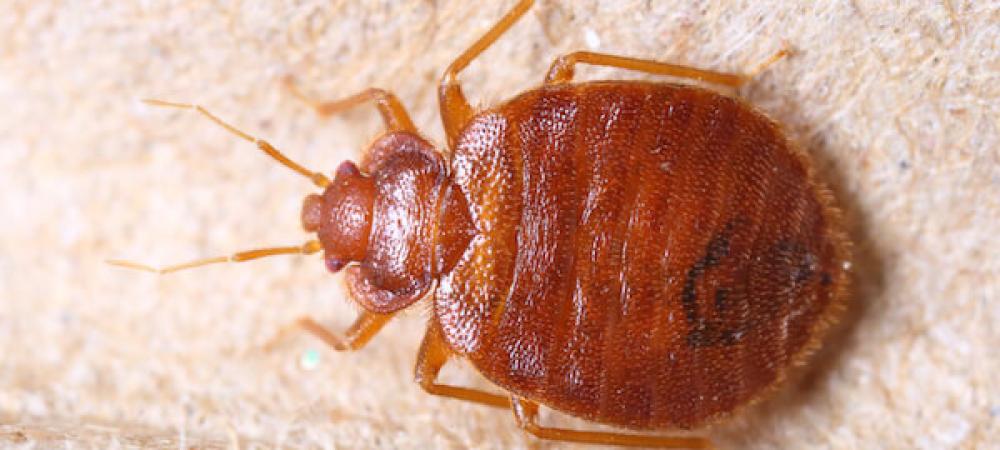Common Insects in Maryland

Maryland is home to a diverse range of insect species, playing important roles in the local ecosystem. From pollinators to decomposers, these insects contribute to the balance and biodiversity of the state's natural environment.
Bed Bugs
One way to identify a bed bug is by their appearance. They are small, reddish-brown insects that are about the size of an apple seed. They have flat bodies and are often found in and around the seams of mattresses, box springs, and furniture. Bed bugs also leave behind small reddish-brown stains on sheets and mattresses.
When traveling, it is important to inspect hotel rooms before bringing your belongings inside. Check the seams of the mattress, the headboard, and the area around the bed for any signs of bed bugs. Additionally, it's essential to keep outerwear regularly washed, as bed bugs can also hitch a ride on clothing.
Preventing and controlling bed bugs involves regular inspection and vacuuming. By inspecting your home for any signs of bed bugs and vacuuming regularly, you can help control a potential infestation before it becomes a more significant issue. By staying proactive and vigilant, you can minimize the risk of bed bugs in your living environment.
Springtails
Springtails are tiny, wingless insects with a characteristic spring-like appendage on their abdomen, enabling them to jump impressive distances. They are typically between 1-2 mm in length and come in a variety of colors, including white, gray, and black. They are commonly found in moist, humid environments such as soil, leaf litter, and decaying plant matter.
Springtails are detritivores, meaning they feed on organic matter such as fungi, algae, and decaying vegetation. They are also known to feed on microscopic organisms like bacteria and protozoa. Due to their feeding habits, they play a crucial role in the decomposition process, aiding in nutrient recycling in soil and contributing to overall ecosystem health.
While they are not harmful to humans, springtails can become a nuisance when they infest indoor areas with high moisture levels, such as bathrooms, kitchens, and basements. To manage springtail populations, it's important to reduce moisture levels and improve ventilation in infested areas. Additionally, sealing cracks and crevices to prevent their entry and using insecticidal sprays or diatomaceous earth may help control infestations.
Drain Flies
Drain flies, also known as moth flies, are small, fuzzy insects with a wingspan of about 1/8 inch. They are usually gray or black in color, and may have lighter colored or transparent wings. These flies are commonly found near drains, sewage systems, and stagnant water sources.
To effectively get rid of drain flies in the home, it is important to regularly clean and treat drains to remove organic material where the flies lay their eggs. Additionally, eliminating standing water in sinks, showers, and other areas will help reduce their breeding grounds. Using natural or chemical-based fly traps can also help control the population of drain flies.
Silverfish and Firebrats
Silverfish and firebrats are small, wingless insects that are commonly found in homes. They are nocturnal creatures and are often found in dark, damp areas such as basements, kitchens, and bathrooms.
Both silverfish and firebrats are scavengers and primarily feed on starchy materials such as paper, glue, and clothing. They are known to cause damage to books, wallpaper, and clothing, as well as contaminate food and pantry items.
To prevent infestations, it is important to keep homes clean and dry, as these pests thrive in moist environments. Sealing cracks and crevices, repairing leaky pipes, and reducing clutter can also help prevent infestations. If an infestation occurs, using traps and insecticides specifically formulated for silverfish and firebrats can help control their populations.
Paper Wasps
Paper wasps, also known as umbrella wasps, are slender, long-legged wasps with narrow waists. They have black or brown bodies with yellow or red markings. These wasps are known for their aggressive behavior when their nests are disturbed. They are social insects and build their nests from paper-like material, which they make by chewing wood fibers and mixing them with their saliva. Paper wasp nests can be found in sheltered areas such as eaves, overhangs, and tree branches.
In Maryland, other common wasps include yellow jackets and hornets. While paper wasps are generally less aggressive than other wasp species, they can still sting repeatedly if provoked. Yellow jackets tend to build their nests underground or in wall voids, while hornets are known for building large, enclosed nests in trees or on buildings.
Dealing with paper wasp nests can be risky, as their stings can be painful and, for some people, can cause severe allergic reactions. It is important to take precautions such as wearing protective clothing and approaching the nest carefully. Professional pest control experts in Maryland should be contacted for safe and effective nest removal, as attempting to remove a paper wasp nest without proper equipment and expertise can lead to dangerous encounters. The potential risks associated with DIY nest removal make professional pest control the best option for dealing with paper wasps.
Flower Fly
Flower flies, also known as hoverflies or syrphid flies, are small, colorful insects commonly found near flowers, gardens, and agricultural fields. They are natural predators of aphids, feeding on these destructive pests during their larval stage. As nonselective pollinators, flower flies play an essential role in pollinating a wide variety of plants, including agriculturally important crops such as fruit trees, vegetables, and legumes.
These beneficial insects can be found in a range of habitats, from urban gardens to rural farmlands, and are particularly attracted to flowering plants such as daisies, sunflowers, and wild parsley. Their versatility and adaptability make them a valuable asset to agricultural ecosystems.
Flower flies have a significant impact on agriculture by helping to control aphid populations, which can damage crops and reduce yields. By consuming aphids, flower flies help farmers reduce the need for chemical pesticides, making them a sustainable and environmentally friendly pest control option.
Overall, flower flies contribute to the health and productivity of agriculturally important crops while also serving as valuable natural predators in the fight against aphid infestations.
Spotted Lanternfly
The spotted lanternfly is a small, plant-hopping insect with distinctive black and white spotted wings and a bright red abdomen. They can also be identified by their size, as adults are about one inch long.
Spotted lanternflies pose a significant threat to agricultural crops and local ecosystems. They feed on a wide range of plants, including grapes, fruit trees, and hardwoods, which can lead to decreased crop yields and even plant death. In addition, their feeding process can also leave behind a sticky substance called honeydew, which promotes the growth of sooty mold and attracts other pests.
Proactive management is crucial to control the spread of spotted lanternflies. This includes targeting and removing egg masses in the fall and early spring, as well as implementing insecticide treatments. The use of systemic insecticides can be effective in controlling spotted lanternfly populations, but it is important to use them carefully to minimize impacts on non-target species.
In conclusion, the spotted lanternfly is an invasive species that can have devastating effects on agricultural crops and local ecosystems. It is essential to take proactive measures to control their spread to protect our agricultural industry and natural habitats.

